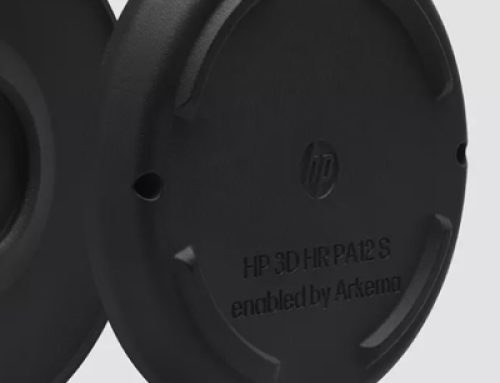This is an excerpt from an article by Chad Sansing posted on SLJ.com
If you’ve ever seen a 3-D printer at work, you know how mesmerizing it can be. LEDs flicker to life, fans and motors spin up to speed, and then, the print head (or nozzle) begins its dance back and forth along X- and Y-axis belt drives (and up and down the Z-axis), extruding its “make” into being onto the print plate. Equal parts robot, building blocks, and hot glue gun, 3-D printing is a technology that’s making its way into schools and libraries.
The printers work like this: a print head draws plastic filament from a large reel, heats the filament, and then extrudes it onto a build plate to print in 3-D. The print head (and sometimes the build plate) move on X, Y, and Z axes following instructions from design files uploaded to the printer via USB cable or SD card. Once the heated filament hits the build plate, it cools quickly, so the print head can dash back and forth across cooled portions of the print and continue its additive work, building up to the top of the design. Of course, dash is a relative term. Complex builds take hours, if not days (add to that the design time). Nevertheless, 3-D printing seems magical, and the feeling of wonder we get from watching a printer at work is a strong hook.
After we get a handle on how the printers work, what’s next? What is possible with 3-D printing in schools and libraries? And is it possible that the answer is “nothing much”?

Students at Clarke Middle School, Athens, GA, with the school library’s 3-D printer.
Photo courtesy of Clarke Middle School Library
Outside of school, 3-D printers have been used to manufacture all sorts of things from art and prosthetics to Minecraft statuettes and spare parts for the space station.
However, not all of these projects are easily or immediately replicable inside classrooms and libraries.
How can libraries—inside and outside of schools—get started with a single printer? How do 3-D printers fit into emerging library maker spaces? And who pays for and maintains this technology? How do we educate students and other users about our printers and ensure access to the device(s) while serving hundreds of patrons or students a day?
Thankfully, early adopters have taken the plunge and begun to grapple with these issues. These expert explorers have plenty of useful firsthand experience to share.
SO IS 3-D PRINTING WORTH THE HYPE?
The short answer: yes.
While initially a skeptic, Roberts says, “the machine truly is awe-inducing. It has garnered quite a bit of interest in local media and demonstrated that the library is ‘more than books.’” However, he adds, “it’s probably not for all libraries.” Lendl concurs. “Like any program at the library, it’s not a one size fits all,” he says. However, after seeing printing at work in his library’s teen space and in an outreach program at Shuman Juvenile Detention Center, he says, “3-D printing has brought a certain ‘wow’ factor to the teen space and has allowed many teens to see themselves as designers and makers who wouldn’t have embraced those roles otherwise.”
Klevence also takes a measured, though ultimately positive, stance. He says, “3-D printers are great, but be sure to work out the infrastructure… and take into account the variety of patron interests from Naruto to baking. Use them in a sustainable fashion by printing things for the library first. Measure twice and cut once by playing around on the modeling
Thorsen says that it can be a “hard call” to purchase a 3-D printer from a library budget, but, overall, 3-D printing is, “a lot of fun and the kids have really taken to it.” Her Albemarle County colleagues Atkinson and Craddock agree. “It’s absolutely worth the hype,” says Atkinson. “The ability to make an idea a reality is pretty darn awesome.”
If you have the time, money, and space to make 3-D printing a visible part of your school or community library or maker space, it seems like a great time to make an investment in turning ideas into realities. You don’t have to be an expert to begin 3-D printing, but you do have to commit yourself to learning the modeling and printing sides of the technology. You’ll likely not be alone in dreaming up projects or unclogging printers, but it will take a personal investment by you to get 3-D printing up and running in your learning space. There is help all around, but there are challenges, too. It’s likely that we’ll have to take advantage of both to do 3-D printing well in the library.









Leave A Comment